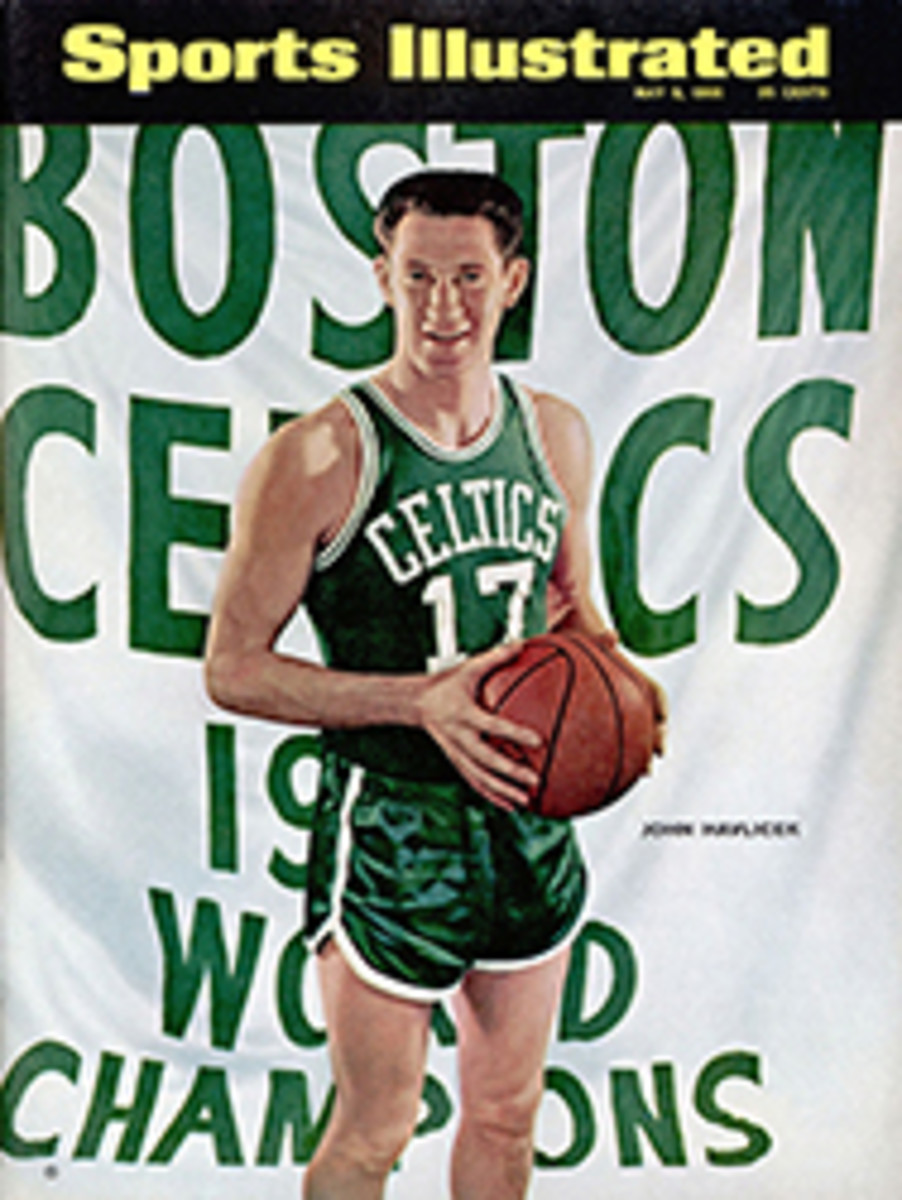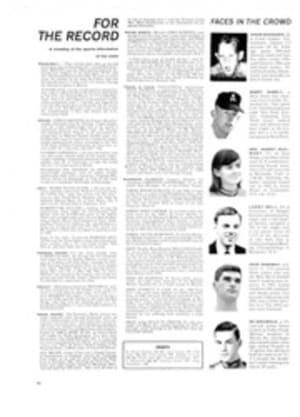
The winning way to Nassau is Wynne's way
Followers of the wild, wet sport of ocean powerboat racing know Jim Wynne, the bearded Miamian, as a master hull designer, a superior marine engineer and a smart, brave driver (SI, Aug. 2, 1965), but a lot of blue-water racers can claim those talents. What sets Jim apart from all the rest is his peerless skill as a navigator.
The way that Wynne drove a boat called Ghost Rider to victory in the much-postponed Miami-to-Nassau race last week left not the slightest doubt as to his right to be called the No. 1 powerboat racing man in the world. He set a lonely, daring course on the first leg of the 184-mile trip, and thus built up a lead that was never really threatened thereafter.
When Wynne cut his throttles and cased into a slip at the Nassau Yacht Club a little less than four hours after the start, the second finisher was 10 minutes behind and the rest of the 58-boat fleet was scattered and well beaten—30 of the racers were lying disabled at sea with burned-out engines or battered, leaking hulls.
The route Wynne steered so brilliantly starts off Government Cut near Miami Beach, and the first 55-mile leg takes the boats thumping across the turbulent Gulf Stream. The first point at which race officials take note of the running order is the tiny island of Cat Cay in the Bahamas. The boats pull up to a dock where, as a customs formality, a piece of official paper wrapped around a rock is tossed to each craft's crewman. If the crewman drops it overboard the driver must come around so another rock can be tossed, for without the customs O.K., which is as vital as a passport, a boat will not be considered a finisher.
Next the racers speed 16 miles across the translucent water of the Great Bahama Bank, their clearly visible shadows chasing them along the bottom, to the beacon called Sylvia Light. For the next 55 miles they are out of sight of land in water usually smooth but with variable currents that can penalize the helmsman who is not on his navigational toes. (Sherman Crise, the hard-boiled race promoter, provides an annotated chart of the course to each contestant. Here he remarks, "One entry was lost for two days in this area. Had rum...some food...and music.")
The next guidepost is Northwest Light, and then the course follows a string of islands to Frazier's Hog Cay. After that the boats race into the treacherous deep known as the Tongue of the Ocean. Says Crise's map: "One bastardly piece of water." This is the final, 40-mile leg to Nassau—and the prospect of sweet release from the trip's hammering.
Red Crise brags of his race as the world's roughest, but even Crise likes to have a finisher or two, so he delayed last week's event for five long, frustrating days as the seas danced to skyscraper heights.
Came the day at last when the water was raceable and there was a foul-up at the start. Impatient for the race to go after the long wait, everybody took off five minutes early, and the starter let them go. Everybody, that is, but Wynne. He could not leave just then because he had not yet started one of his twin engines. By the time he had it fired up, the other racers were bunched together well off in the distance, all headed for Nassau. But headed, as Jim Wynne saw it, in the wrong direction. When at last he got both his engines going, Wynne set a course considerably south of the others, aimed to hit Cat Cay right on its sandy nose.
Wynne and his fellow designer, Walt Walters, are both masters at tuning a boat so that it runs its best and fastest in all kinds of weather. Only once in the partnership's long career has a Wynne-Walters boat failed to finish a race, and in this year's Griffith Memorial their turbine-driven entry was one of the only two boats to get to the end. But even more important than Wynne's skill at tuning and steering is his ability to chart a course.
In ocean powerboat racing, where boats are headed over rough seas at speeds up to 60 mph, a navigational error of very few degrees can be fatal. Wynne is a man who knows winds and currents and has confidence in his knowledge. When he believes a certain heading is the right one, he follows it regardless of where other drivers may steer. Before the Nassau race got under way, he had worked out a navigating schedule for Ghost Rider that listed a compass course for every conceivable speed he might attain in every segment of the race. His meticulous thoroughness paid off handsomely. When he lit out across the Gulf Stream at 50 mph, he pointed Ghost Rider's bow exactly where his schedule told him to. At the end of the first leg he was in the happy position of being able to drive just fast enough to keep comfortably out in front, saving his engines from the strain of all-out catch-up racing, which became his competitors' lot.
This is not to say that Wynne had no more to do than a civilian out on a weekend cruise. A fair amount of rough water remained from the previous week's violent churning. Where less gifted drivers sailed alarmingly off the tops of waves or into them, Wynne, standing with one hand on the wheel and the other flicking the throttles, knifed cleanly ahead.
Of the Tongue of the Ocean crossing Wynne said, "It was real rough. We never once took a hard crash, though." Less fortunate was last year's winner and Wynne's most dangerous opponent, Don Aronow. Just before Frazier's Hog Cay, Aronow's Donzi-Magnum racer crunched down against a piece of driftwood which put a hole in the port side of his red hull. Inspired driving brought Aronow into Nassau in second place, but the hull damage (and, possibly, a slower boat) had prevented him from making an all-or-nothing pass at Wynne.
Wynne's boat, which is owned by Sportsman Hugh Doyle, is wooden, with a deep V bottom, 28 feet from stem to transom and powered by Daytona gasoline engines. The hull design is Wynne's own and his latest refinement of a tried and true concept—differing from others like her in being narrower in beam and sharper in the V. Ghost Rider was built by Souter of Cowes, England—and built strong, the way Wynne likes his hulls. She is the prototype of a line of fiber-glass boats to be sold to the public by Thunderbird Products of Miami.
Wynne's longtime partner, Walters, a sailor with the battered visage and wide dimensions of a football lineman, was once a notable ocean racer himself. Walters is married now, the father of two children and has largely backed off the throttle in actual racing. His place at Wynne's side during the Miami-Nassau race was filled by Bert Embree.
"Jim has two things going for him," said Walters as he and Wynne ordered tall planter's punches for a postrace cooling-out in Nassau. "One, he's an old pro. Two, he's a bachelor."
Bachelor Wynne merely grinned through the pepper-and-salt thicket around his lips. It is going to take a heap of matrimony to win Wynne away from the waves.
PHOTO
PHOTO
WINNERS WYNNE (LEFT) AND EMBREE LOOK AS HAPPY AS TWO SUNDAY DRIVERS

